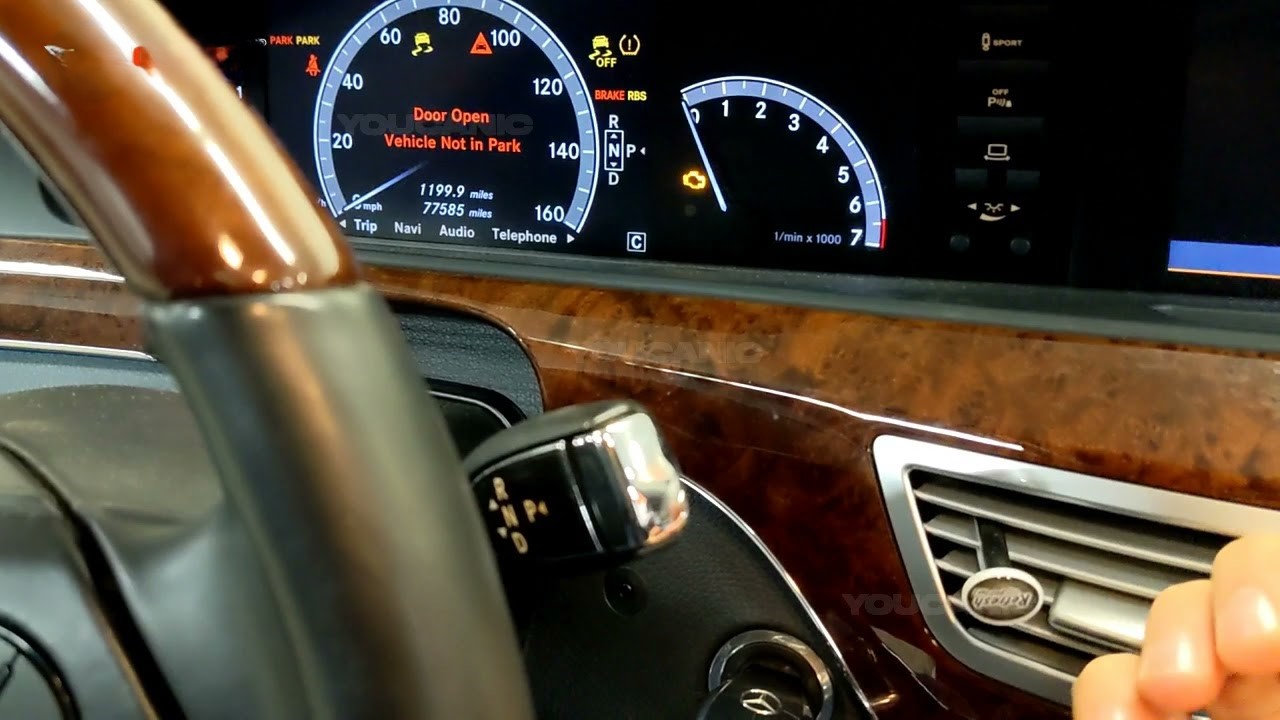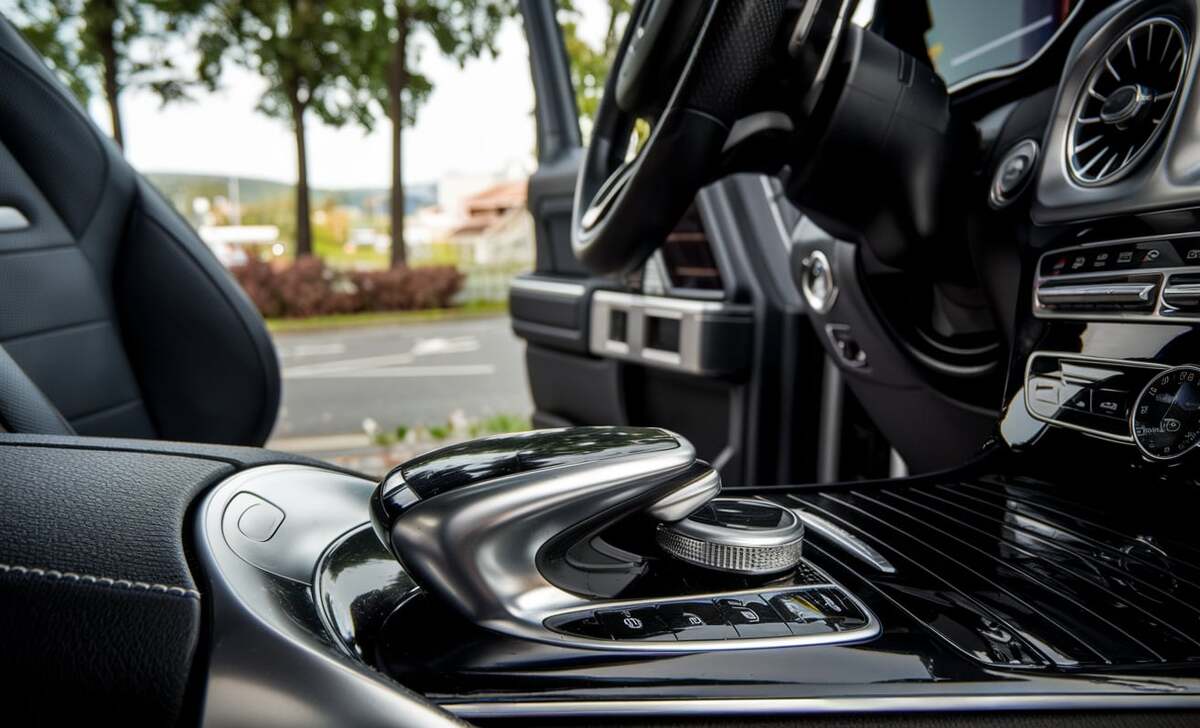Mercedes-Benz is a renowned brand that has always been at the forefront of innovation and technological advancements in the automobile industry. It is a brand synonymous with luxury, style, and performance.
As a Mercedes-Benz S400 Hybrid owner, understanding your vehicle’s functions and features is crucial for a seamless driving experience. One question that may arise is how to put the transmission in neutral when needed.
Here, we will provide detailed, step-by-step instructions on safely and professionally putting your Mercedes-Benz S400 Hybrid transmission in neutral. Let’s dive into the world of Mercedes-Benz engineering together.

Key Takeaways
- Shift to Neutral: Press the brake, use the gear selector lever, and confirm on the dashboard.
- When to Use: Ideal for coasting downhill, towing, idling, or jump-starting.
- Safety First: Always park on level ground and engage the parking brake before shifting.
- Pros & Cons: Reduces wear but limits engine braking and control in emergencies.
- Check the Manual: Follow model-specific instructions for safe operation.
How To Put Mercedes-Benz S400 Hybrid Transmission In Neutral In 6 Simple Steps

Putting the transmission in neutral can be useful if you must coast down a hill or tow the car. To put the transmission in neutral on a Mercedes-Benz S400 Hybrid, follow these steps:
- Start by ensuring the vehicle is parked, and the engine is running.
- Press the brake pedal firmly with your foot.
- Locate the gear selector lever in the centre console.
- Push the gear selector lever upwards to switch to neutral mode.
- Check the instrument panel to confirm that the transmission is now in neutral.
- To return to drive mode, push the gear selector back down. Remember always to exercise caution when changing gears to ensure safe driving practices.
When To Put The Transmission In Neutral

Putting the transmission in neutral is necessary in various situations. One instance is when you need to coast downhill to save fuel or give your brakes a break. Here are some cases when it is recommended to shift to neutral:
- When Stopped at a Traffic Light: If you are waiting at a long traffic light or stuck in heavy traffic, putting the transmission in neutral can help reduce stress on the clutch and prevent premature wear.
- Coasting Downhill: Shifting to neutral can break your brakes when driving downhill, especially on a steep slope. By allowing the vehicle to coast in neutral, you can prevent overheating of the brakes and maintain better control over the vehicle’s speed.
- When Towing: If you tow a trailer or another vehicle, it is advisable to put the transmission in neutral. This helps to prevent strain on the engine and transmission, ensuring smoother and safer towing.
- During Extended Idling: If you anticipate waiting for an extended period with the engine running, such as at a railroad crossing or at a drive-thru, putting the transmission in neutral can help conserve fuel and reduce wear on the engine.
- When Jump-Starting the Vehicle: When jump-starting a vehicle, it is important to put the transmission in neutral to prevent any unexpected movement when the engine starts.
Safety Precautions When Putting The Transmission In Neutral

Regarding safety precautions in the automotive industry, putting the transmission in neutral is a crucial step that requires careful attention. Here are some essential safety measures to keep in mind:
- Park The Vehicle On A Flat And Stable Surface: Before attempting to put the transmission in neutral, ensure that your vehicle is parked on level and sturdy ground. This will prevent any unexpected movement or rolling during the process.
- Engage The Parking Brake: Always engage the parking brake before shifting the transmission to neutral. This additional measure adds an extra layer of security and helps prevent the vehicle from unintentionally moving.
- Turn Off The Engine: It is highly recommended to turn off the engine completely before putting the transmission in neutral. This will eliminate any risks associated with the engine starting or the vehicle unexpectedly engaging a gear.
- Familiarize Yourself With The Vehicle’s Manual: Each vehicle may have its specific instructions for shifting to neutral. It is crucial to consult your vehicle’s manual and understand the proper steps and precautions for your particular make and model.
- Use caution While Operating The Gear Selector: When shifting the transmission to neutral, do so with care and precision. Avoid applying excessive force or rushing through the process. Take your time and ensure that the gear selector is firmly and securely in the neutral position.
Benefits And Drawbacks Of Putting The Transmission In Neutral

Putting the transmission in neutral on a Mercedes-Benz S400 Hybrid can have both benefits and drawbacks. Here are some key points to consider:
Benefits:
- Reducing wear on the transmission components.
- Allowing the engine to run at idle can save fuel.
- Easier and smoother towing of the vehicle.
- It can prevent unintended acceleration in certain situations.
Drawbacks:
- Loss of engine braking when going downhill.
- Reduced control over the vehicle, especially in emergencies.
- Potential for increased fuel consumption if not done strategically.
- It may void the warranty or impact vehicle performance if done incorrectly.
It is important to weigh these pros and cons carefully before putting your Mercedes-Benz S400 Hybrid’s transmission in neutral.
Conclusion
Putting the transmission in neutral on your Mercedes-Benz S400 Hybrid is a simple yet essential task that can be useful in various situations. Following the steps, you can smoothly shift your vehicle into neutral gear whenever needed, ensuring safety and convenience while driving.
Refer to your car’s manual for specific instructions tailored to your model. Mastering this technique adds to your driving skills and equips you with the knowledge to handle different driving scenarios effectively. Drive safely and confidently with the ability to put your Mercedes-Benz S400 Hybrid’s transmission in neutral when required.
FAQs
1.What Does Transmission Fluid Do?
Transmission fluid is essential for ensuring that an automatic transmission functions properly. It lubricates the various components within the transmission, preventing wear and heat buildup.
Over time, the fluid can become dirty or degraded, affecting the shifting process and potentially damaging the transmission. To maintain optimal performance, it is recommended that the transmission fluid be checked and changed according to the manufacturer’s guidelines.
2.How Often Should You Check Your Transmission Fluid?
You should check your transmission fluid at least once a year or as your vehicle’s owner’s manual recommends. It is important to regularly monitor your transmission fluid to ensure that it is at the proper level and in good condition.
If you notice any signs of leaks, unusual noises, or difficulty shifting gears, a professional mechanic should check your transmission fluid. Regular maintenance of your transmission fluid can help extend the life of your automatic transmission and prevent costly repairs in the future.
3.How To Put The Car In Neutral With Dead Battery?
If your car has an automatic transmission and a dead battery, you can put it in neutral by using a procedure called “shift lock release.”
This method usually involves inserting a key or a screwdriver into a slot near the gear shifter to release the lock and allow you to shift into neutral. Be sure to consult your owner’s manual for specific instructions on performing this task in case of a dead battery.
4.What Are The Signs Of Low Transmission Fluid Levels?
One of the signs of low transmission fluid levels is difficulty shifting gears. When the transmission fluid is low, the automatic transmission may not engage properly, causing delays or jerky movements when moving from one gear to another.
If you notice any of these symptoms, it is advisable to check the transmission fluid level and top it up as needed to prevent further damage to the transmission system.
5.How Do You Put A 4matic In Neutral?
To put a 4Matic vehicle in neutral, you must shift the transmission lever into the “N” or “Neutral” position. This can usually be done by pressing the brake pedal and moving the lever from “P” or “Park” to “N.”
6.How Do I Get My Mercedes Out Of The Park?
To get your Mercedes out of the park, make sure the car is running and the brake pedal is pressed firmly. If the car still doesn’t move, check if the shift lock override button (usually located near the gear shifter) needs to be pressed while shifting out of the park.
7.How Do You Put An Automatic Car In Neutral Without Starting It?
To put an automatic car in neutral without starting it, you can turn the ignition key to the “ACC” or “accessory” position. Then, press the brake pedal and move the gear shift to neutral. This allows the car to be in neutral without the engine running.
8.How Do You Put A Mercedes E300 In Neutral Without A Key?
Without a key, it is impossible to put a Mercedes e300 in neutral as the vehicle’s transmission system requires the key to be inserted in the ignition and turned to the appropriate position for shifting gears.
9.Can You Drive A Mercedes Without A Key?
No, you cannot drive a Mercedes without a key. The key is an essential component for starting and operating the vehicle. Without the key, the car’s engine immobilizer system will prevent the engine from starting. Additionally, Mercedes models typically come with keyless entry.